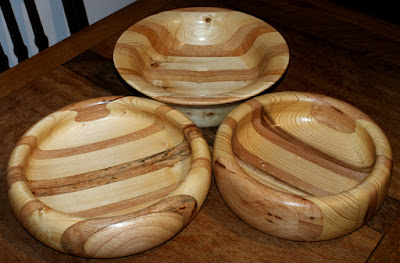So that's it for another year, well a few months anyway, the weather is getting colder, certainly windier where we are, not much is growing now.
It's been a mixed year for us veg wise, we haven't had as much from the plot this year, but some of that was due to rodents and other things like the weather, we lost all our sweet corn, it got eaten, it was there one day and pretty much gone the next, the little buggers had the strawberries as well.
Exhibit 'A' your honour -
It's been a mixed year for us veg wise, we haven't had as much from the plot this year, but some of that was due to rodents and other things like the weather, we lost all our sweet corn, it got eaten, it was there one day and pretty much gone the next, the little buggers had the strawberries as well.
Exhibit 'A' your honour -
 |
| At least some one enjoyed it... |
On the plus side our Asparagus seems to be doing well, it's been cut back now, but it has grown a fair bit and we'll maybe get some to eat next year, it's taken a while raising the plants from seed, but so far it's going well.
Asparagus -
 |
| The picture was taken at the end of summer. |
Spuds did well this year, we've had around 40 kg of spuds, double the amount we had last year, we also did well for beetroot which my wife was happy about (I can't stand the stuff) we got a fair amount of squash type veg, not as big as last year, but enough to keep us going for a while.
Some beetroot, spuds and beans -
 |
| A small selection of what we ended up with. |
We put two broad bean crops in, the idea being one we'd eat and the second we'd half eat and then save the rest for the seeds, the rodents got them too, they have been an ever present menace this year affecting some on the site worse than others.
Some of the squashes we got, some of which have been eaten or turned into things ready to be eaten, this year we grew some round courgettes, we only planted a few and they don't seem to put out as much as a normal courgette plant but they were very tasty.
Courgettes and other squashes -
 |
| Round courgette to the left of the picture, lighter green than normal courgettes. |
The round courgettes are good for stuffing, just open them up, like you would a pumpkin and scoop out the insides then fill with whatever takes your fancy and roast for a bit, very tasty, stuff you've grown yourself always seems to taste better.
Dinner -
 |
| A great use for a round courgette. |
My wife did the cooking, she used sausage meat, onions and garlic and some other things and the topped it with cheese and roasted it, tasted great and they are a nice size for one person as well.
And of course we still have a pile of squashes for eating through winter, some have been turned into relish and some have been turned into purée (pumpkin) for pies and soups.
Future meals -
 |
| You don't have to keep your squashes in a cat bed. |
And that as they say is that, another year done, I have some concerns about the soil on the plot, so over winter and into spring I'll be trying to improve it a bit, maybe invest in some manure and such like and no doubt there will be loads of small jobs to get done before growing starts next year, we still have some things in the ground, like leeks and swedes, but for the most part the plot is being left alone for a few months, I'll cut back any weeds and let them rot down, this may also help the soil a bit.
So for now we'll say bye to the plot and see you in the spring -
 |
| Soon be time to start again. |
Thanks for reading.





























































